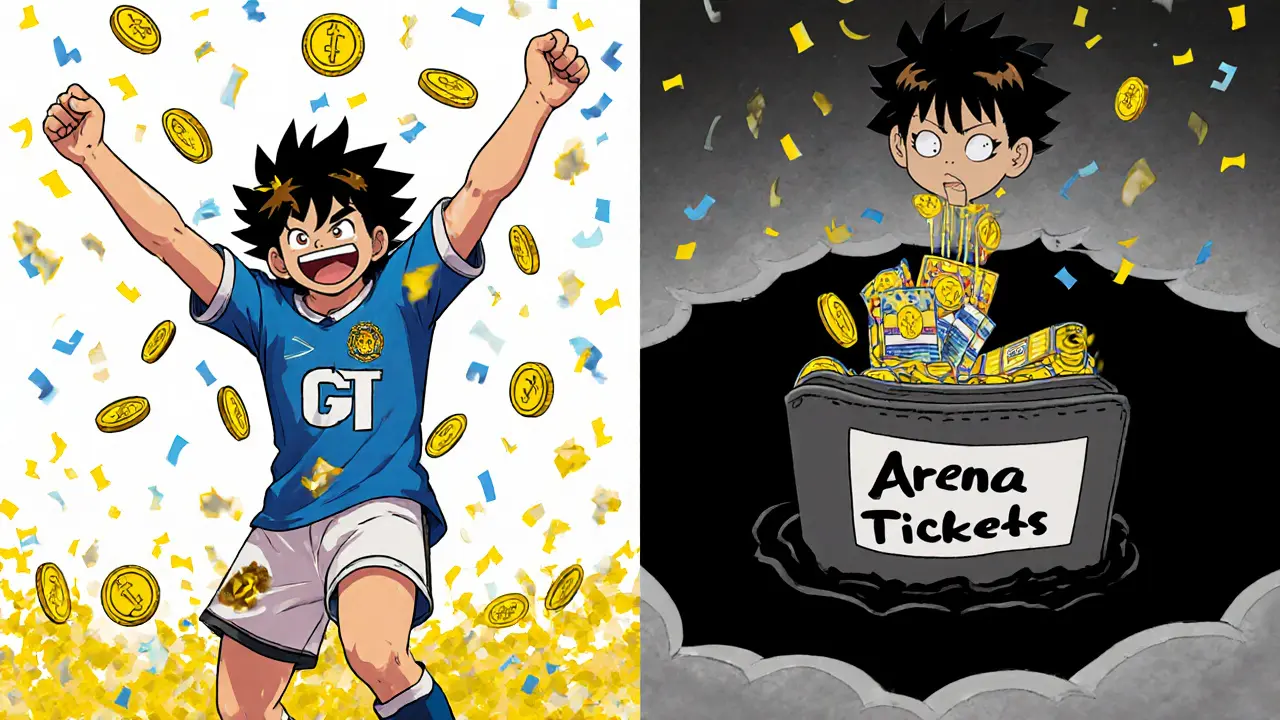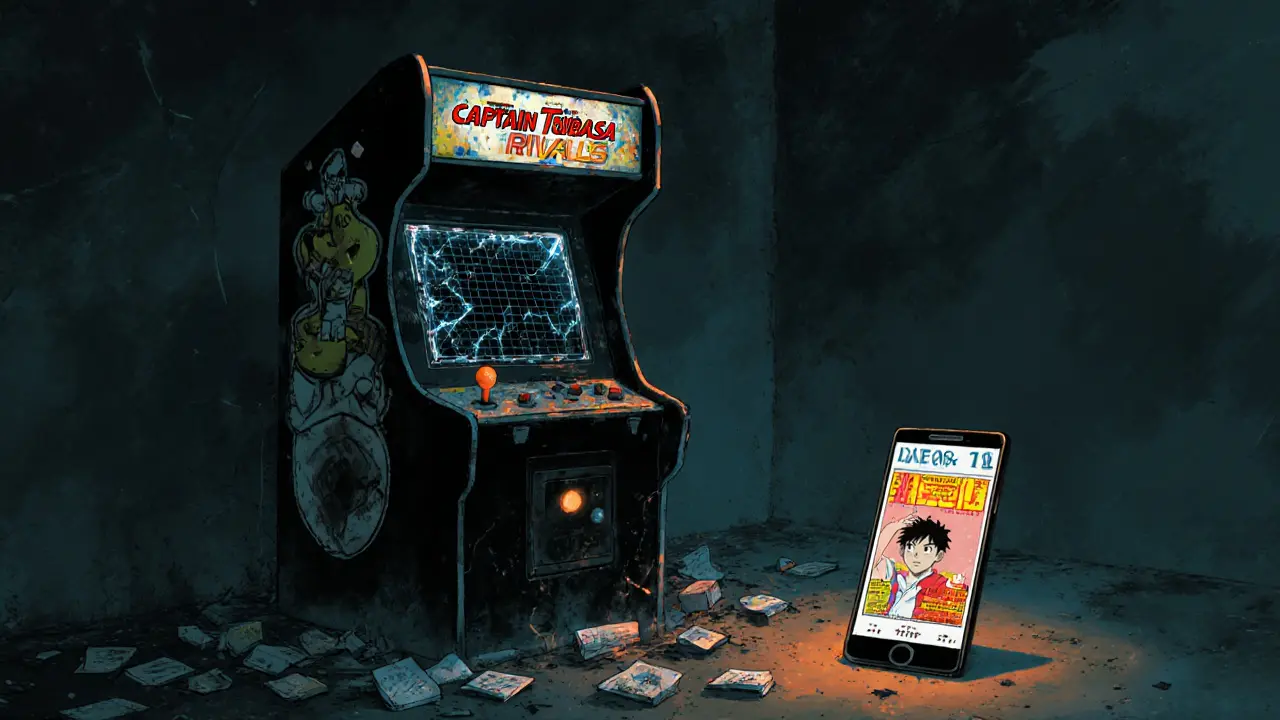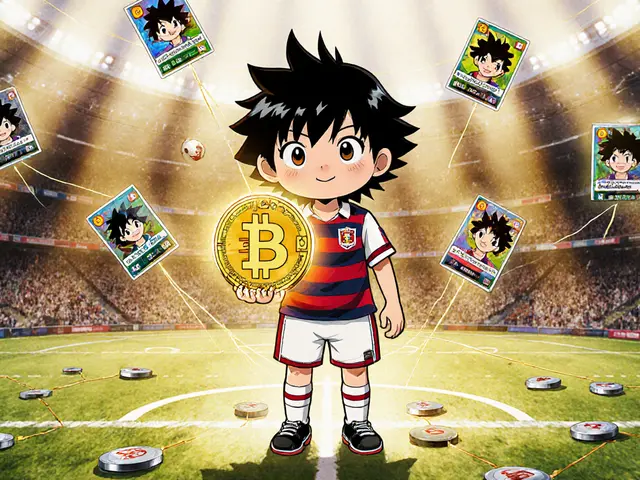TSUGT Token Cost Calculator
Token Cost Analysis Tool
Calculate your potential TSUGT costs and earnings based on your gameplay activity in Captain Tsubasa: RIVALS.
Note: Current TSUGT price: $0.00012-$0.00065 (varies by exchange)
Token Economics Summary
- 5 TSUGT per Arena Ticket
- 20 TSUGT per Fusion (average)
- 4 TSUGT earned per Arena win (estimated)
When you hear Captain Tsubasa, you probably think of the classic Japanese manga about a boy who dreams of becoming the world’s best soccer player. Now, that same name is attached to a cryptocurrency called TSUGT - a token built for a blockchain game that lets fans play as their favorite characters from the series. But what exactly is TSUGT? Is it just a gimmick tied to nostalgia, or does it have real use in the game? And should you even care about it in 2025?
What is TSUGT and how does it work?
TSUGT is the native token of Captain Tsubasa: RIVALS, a blockchain-based soccer game launched on January 12, 2023. It’s not a currency you use to buy coffee or pay bills. It’s a utility token - meaning it only has value inside the game. Think of it like game coins in an online multiplayer game, but built on the Polygon blockchain so you can trade them on crypto exchanges if you want.
The total supply of TSUGT is capped at 1 billion tokens. As of late 2025, around 809 million are in circulation. The game uses these tokens for almost everything: buying Arena Tickets to compete in matches, fusing NFT player cards to make them stronger, unlocking special abilities, and trading rare characters with other players.
You can also earn TSUGT by winning matches in the Arena mode - the game’s main competitive feature. That’s the whole idea: play, win, earn. It’s not just about collecting cards; it’s about using the token to keep playing and climbing ranks.
Why does TSUGT have such a low price?
As of November 2025, TSUGT trades between $0.00012 and $0.00065, depending on the exchange. That’s less than a hundredth of a cent. It’s hard to wrap your head around, but low prices like this are normal for gaming tokens with huge supplies. A billion tokens divided across thousands of players means each one ends up worth very little.
But here’s the real issue: TSUGT is trading about 99.7% below its all-time high. That’s not a dip - that’s a collapse. Even though the Captain Tsubasa brand has sold over 70 million manga copies worldwide, that fanbase hasn’t translated into sustained demand for the token. Most people who bought TSUGT during its hype phase in 2023 are now underwater. Trading volume has dropped sharply - down 21.5% in the last week according to CoinGecko. On some days, Gate.io was the only exchange with meaningful volume, and even then, it barely hit $40,000 in 24 hours.
This isn’t a sign of a thriving game. It’s a sign that players aren’t using the token enough. If you’re not buying Arena Tickets, fusing NFTs, or trading cards regularly, the token has no real demand. And without demand, the price stays flat - or falls.
How is TSUGT used in Captain Tsubasa: RIVALS?
The game isn’t just a card collection app. It’s built around three core systems: collecting NFT player cards, upgrading them, and competing in ranked matches.
- Arena Tickets: To enter competitive matches, you need to spend TSUGT. These tickets are consumed every time you play, so active players burn through tokens quickly.
- NFT Fusion: Want to turn two common players into a rare one? That costs TSUGT. The more powerful the card, the more tokens it takes to upgrade.
- Character Buffs: Temporary boosts like extra stamina or skill accuracy cost TSUGT to activate during matches.
- Trading: You can sell your unwanted cards on the in-game marketplace for TSUGT. Other players use the token to buy them.
- Win Rewards: If you win in the Arena, you get TSUGT back - but usually less than you spent to enter.
The tokenomics are designed like a loop: spend to play, win to earn, spend again to get better. But if players aren’t winning often, or if the game feels repetitive, the loop breaks. And that’s what’s happening. The game’s core loop isn’t sticky enough to keep people coming back - especially when the token’s value keeps dropping.

Can you make money with TSUGT?
Some people still believe TSUGT will rebound. Forecasters on TradingBeast predict it could drop to $0.000118 by early 2026. Others, like some crypto analysts, say it might hit $0.0013 by the end of 2025 - a tenfold increase. But those predictions are based on speculation, not data.
Here’s the truth: if you’re buying TSUGT hoping to flip it for profit, you’re playing a risky game. The token’s value isn’t tied to real-world adoption, revenue, or user growth. It’s tied to hype and speculation. And hype fades fast in crypto.
There’s one legitimate way to make money: play the game well. If you’re good at managing your NFTs, winning Arena matches, and trading cards at the right time, you can earn more TSUGT than you spend. But that’s not investing - that’s playing a skill-based game. And it requires time, patience, and a deep understanding of the game’s economy.
Why hasn’t the Captain Tsubasa brand saved TSUGT?
This is the biggest question. Captain Tsubasa is a global phenomenon. Kids in Brazil, Egypt, and the U.S. grew up watching the anime. There’s a built-in audience of 70 million manga readers. Why hasn’t that translated into millions of active players?
Because nostalgia doesn’t pay bills. People love the manga, but they don’t necessarily want to pay to play a blockchain soccer game that feels like a grind. The gameplay isn’t polished enough to stand out against mobile soccer games like FIFA Mobile or eFootball. The graphics are basic. The mechanics are repetitive. And the token system feels like a pay-to-win trap.
Plus, the crypto winter of 2022-2023 killed most blockchain gaming projects. Investors pulled out. Players moved on. Even big names like Axie Infinity struggled to recover. Captain Tsubasa: RIVALS was launched right in the middle of that crash. It never got the funding or marketing push needed to survive.

Is TSUGT still worth paying attention to?
If you’re a fan of the manga and you enjoy collecting digital cards - maybe. But don’t buy TSUGT expecting to get rich. Buy it only if you plan to play the game seriously and use the token for its intended purpose: unlocking content, competing, and trading.
For everyone else? It’s not worth the risk. The project has shown no signs of a comeback. Trading volume is low. Price is falling. The team hasn’t announced major updates since 2024. The GitBook documentation is still active, but that’s about it.
The real test for TSUGT isn’t whether it can rebound in price. It’s whether the game can become fun enough that people want to play it - even if the token never goes up.
Where can you buy TSUGT?
TSUGT is available on a few centralized exchanges, but not all of them. The most active trading pair is TSUGT/USDT on MEXC, where daily volume hits around $90,000. Gate.io and KuCoin also list it, but volume there is much lower. You won’t find it on Coinbase, Binance, or Kraken - which tells you everything you need to know about its market standing.
Before buying, check the current price across multiple platforms. Prices vary wildly. One site might say $0.00012, another $0.00065. That’s because of low liquidity and thin order books. Small trades can move the price a lot. Be careful.
What’s next for Captain Tsubasa: RIVALS?
The developers have said they’re focusing on improving the Arena mode and adding new player cards based on the Rising Sun and Magazine sequels. But there’s been no major update since late 2024. No new features. No partnerships. No marketing.
The project needs one thing to survive: player retention. If the game can make winning feel rewarding, not just a grind, and if the token economy can balance spending and earning without feeling exploitative, maybe it can stabilize.
But right now, it’s a fading echo of a once-popular franchise. The manga lives on. The game? It’s barely breathing.

Andy Purvis
TSUGT is just another crypto project riding on nostalgia and bad design
Kristin LeGard
Why are Americans so obsessed with turning everything into a scam? Captain Tsubasa was about passion, not pay-to-win blockchain nonsense. This is why the world thinks we’re all greedy idiots.
Arthur Coddington
Let’s be real - this isn’t about soccer. It’s about the death of imagination. We used to dream of scoring the winning goal in the World Cup. Now we dream of staking tokens to fuse a digital version of Tsubasa’s free kick. We’ve become ghosts in our own nostalgia.
Phil Bradley
I remember when I was 12 and drew Tsubasa’s signature move on my notebook. Now I’m watching grown adults trade NFTs of him like baseball cards in a basement. I’m not mad, I’m just… sad. This isn’t progress. This is a funeral with a whitepaper.
Stephanie Platis
It’s important to note that the tokenomics are fundamentally flawed: a supply of one billion tokens, with negligible demand, results in a price per unit that is mathematically unsustainable. Furthermore, the lack of liquidity on major exchanges indicates a complete failure of market adoption. There is no excuse for this.
Michelle Elizabeth
It’s not that TSUGT is bad. It’s that it’s a hollow echo. Like listening to a vinyl record of your childhood favorite song, but the needle skips every time you try to play it. The music’s still there, but the magic? Gone.
Joy Whitenburg
i just wanna play the game, not do math on my phone… why does everything have to be a coin now??
Kylie Stavinoha
There is a cultural dissonance here. Captain Tsubasa inspired millions to play soccer, to chase dreams, to believe in the power of effort. This tokenization reduces that spirit to a ledger entry. The tragedy isn’t the price drop - it’s that the soul of the story has been replaced by a smart contract.
Diana Dodu
USA invented blockchain gaming and now we’re watching it die because we can’t stop trying to monetize everything. This is why other countries laugh at us. We don’t love the game - we love the gamble.
Raymond Day
TSUGT is the perfect metaphor for late-stage capitalism. You pay to play, you lose to earn, and you cry while scrolling through your wallet. 📉😭
Noriko Yashiro
Even in the UK, people remember Captain Tsubasa. But this? This feels like a betrayal. The game should have been about joy, not gas fees.
Atheeth Akash
My son still watches the anime. He asked me why Tsubasa has to pay to kick the ball now. I didn’t know how to answer. This isn’t the legacy we wanted for him.